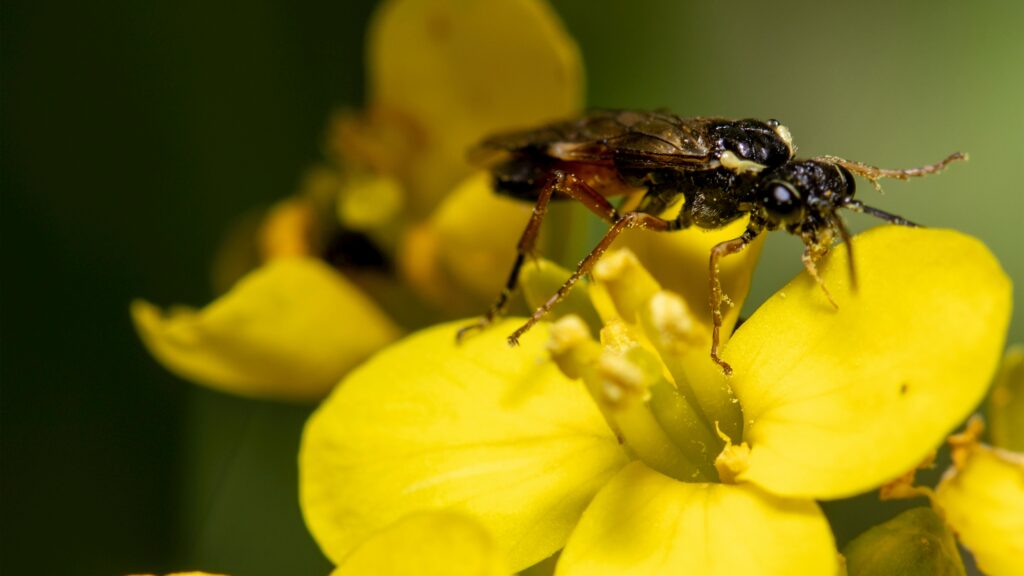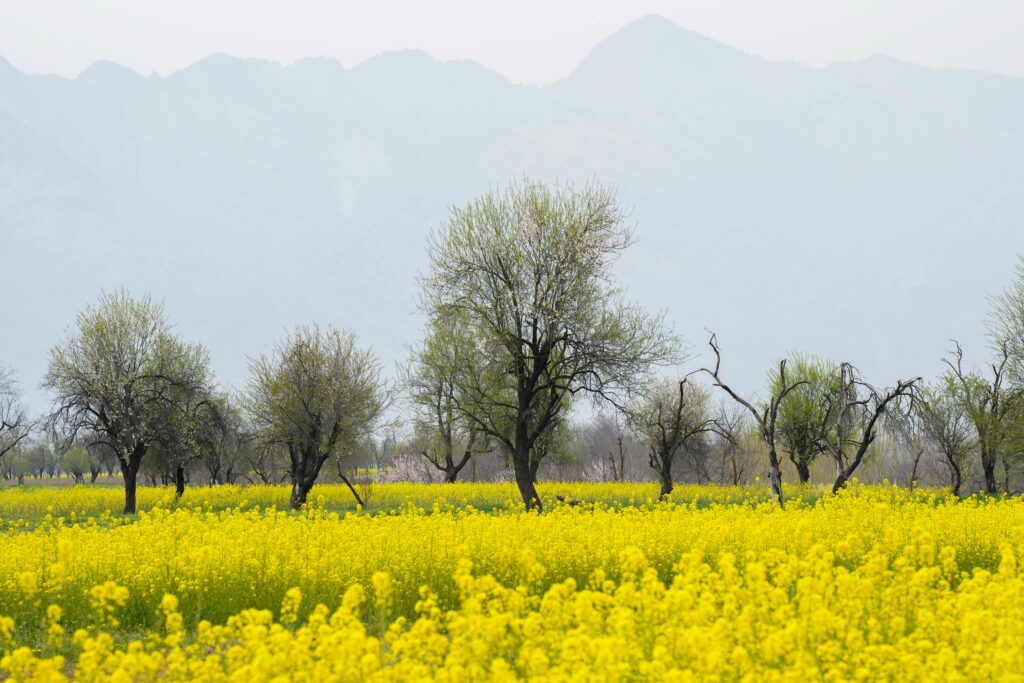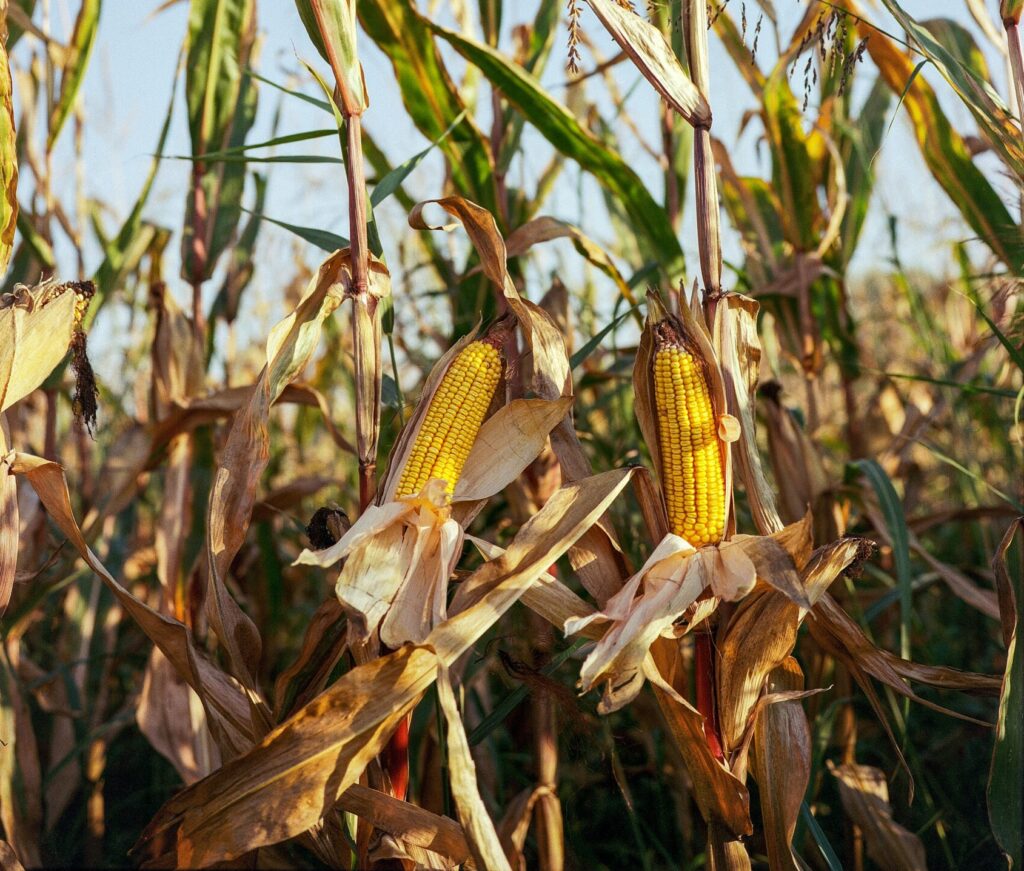Corn is highly susceptible to various pests and diseases, which can lead to significant yield losses if not managed properly. Integrated Pest Management (IPM) practices are crucial for ensuring healthy crops, maintaining soil health, and reducing the need for chemical controls. Below are some of the most common pests and diseases affecting corn and strategies for their management.
1. Common Pests and Their Management
a. Corn Earworm
The corn earworm (Helicoverpa zea) is a destructive pest that feeds on corn kernels, reducing yield and quality. These pests are especially challenging because they infest the ears of corn directly, making them difficult to control.
- Management: Use biological control agents like Trichogramma wasps to attack earworm eggs. Monitoring and early detection can help determine the need for targeted insecticide application. Resistant hybrids and proper timing of planting can also help reduce infestation rates.
b. European Corn Borer
This pest tunnels into the stalks and ears, weakening plants and causing them to be more vulnerable to other diseases and adverse weather conditions.
- Management: Planting Bt (Bacillus thuringiensis) corn hybrids provides protection against corn borers by producing proteins toxic to the pest. Crop rotation and removing crop residues after harvest can also disrupt the corn borer’s life cycle and reduce future populations.
c. Fall Armyworm
The fall armyworm (Spodoptera frugiperda) is a migratory pest that can cause severe damage to corn leaves, tassels, and kernels.
- Management: Biological controls like parasitic wasps and predatory insects can naturally reduce fall armyworm populations. Planting Bt corn hybrids is also effective, and pheromone traps can be used to monitor and manage populations early.
d. Rootworms
Rootworms damage the roots of corn plants, which can hinder nutrient uptake and lead to lodging (plants falling over).
- Management: Crop rotation is an effective strategy because rootworms lay eggs in cornfields, and rotating to a different crop disrupts their life cycle. Additionally, planting rootworm-resistant Bt corn and using soil insecticides at planting can provide protection.
2. Common Diseases and Their Management
a. Gray Leaf Spot
Gray leaf spot is a fungal disease caused by Cercospora zeae-maydis, which produces lesions on the leaves that reduce photosynthesis and weaken the plant.
- Management: Using disease-resistant hybrids and practicing crop rotation can reduce disease spread. Fungicide applications are effective if applied early when symptoms first appear, especially in high-risk areas with wet conditions.
b. Northern Corn Leaf Blight
This disease, caused by Exserohilum turcicum, creates long, gray-green lesions on leaves, significantly impacting yield.
- Management: Disease-resistant varieties are one of the most effective controls. Proper spacing and irrigation management help reduce leaf wetness, limiting fungal growth. In severe cases, fungicides can be applied based on field scouting and early detection.
c. Fusarium Ear Rot
Fusarium ear rot is caused by Fusarium fungi and often develops in damaged corn ears, particularly after insect damage. It can produce mycotoxins, which are harmful if ingested by livestock or humans.
- Management: Planting corn varieties that are less susceptible to ear damage and avoiding late-season insect infestations can reduce ear rot. Harvesting promptly and ensuring proper storage conditions also help minimize contamination.
d. Anthracnose Stalk Rot
Anthracnose stalk rot, caused by Colletotrichum graminicola, affects stalk health, leading to plant lodging and loss in yield.
- Management: Select resistant hybrids, rotate crops to reduce pathogen buildup, and maintain balanced soil fertility to strengthen plants against infection. Field scouting and harvesting fields with high infestation early can prevent severe lodging.
3. Integrated Pest and Disease Management (IPDM)
- Crop Rotation: Rotating corn with non-host crops like soybeans can break the life cycles of many pests and diseases, making it harder for these issues to persist from season to season.
- Field Sanitation: Removing crop residue after harvest minimizes overwintering sites for pests and pathogens, lowering their populations for the next season.
- Biological Controls: Encouraging natural predators and parasites can help maintain pest populations at manageable levels without the need for extensive chemical applications.
- Chemical Control: While pesticides and fungicides can be effective, they should be used sparingly and only when necessary to avoid resistance buildup and environmental impacts.
Managing pests and diseases in corn cultivation requires a combination of cultural practices, biological controls, and, when needed, chemical treatments. By implementing these strategies through an Integrated Pest and Disease Management (IPDM) approach, farmers can reduce crop losses, minimize environmental impact, and ensure sustainable corn production.
















